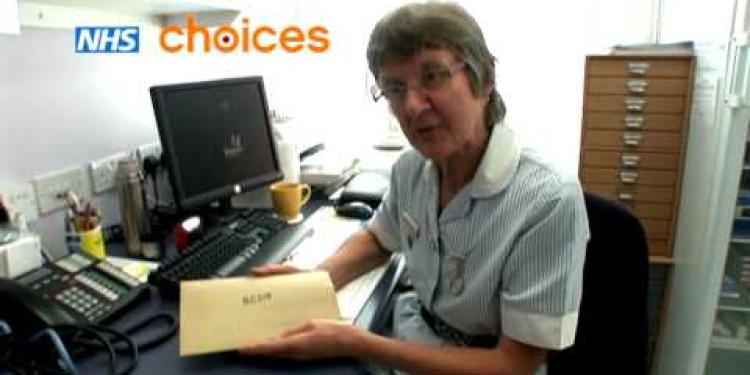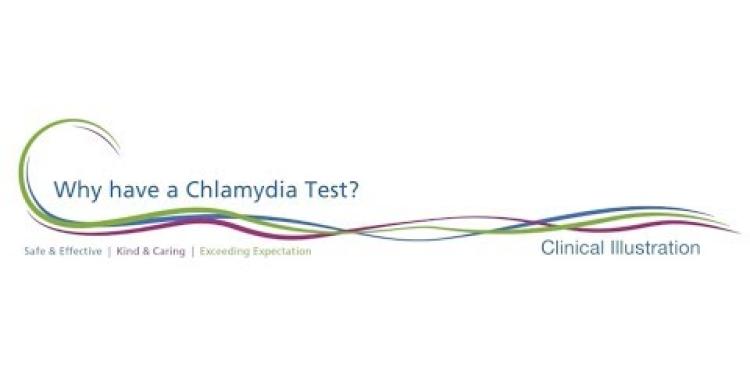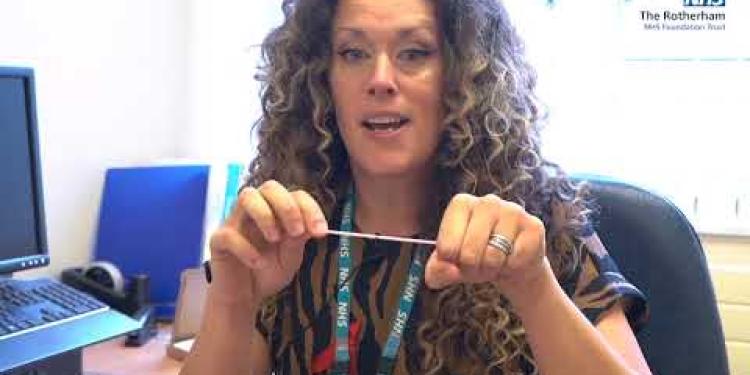Important Information On Using This Service
- Ergsy carefully checks the information in the videos we provide here.
- Videos shown by YouTube after a video has completed have NOT been reviewed by ERGSY.
- To view, click the arrow in the center of the video.
Using Subtitles and Closed Captions
- Most of the videos you find here will have subtitles and/or closed captions available.
- You may need to turn these on and choose your preferred language.
Turn Captions On or Off
- Go to the video you'd like to watch.
- If closed captions (CC) are available, settings will be visible on the bottom right of the video player.
- To turn on captions, click settings.
- To turn off captions, click settings again.
Find A Professional
More Items From Ergsy search
-
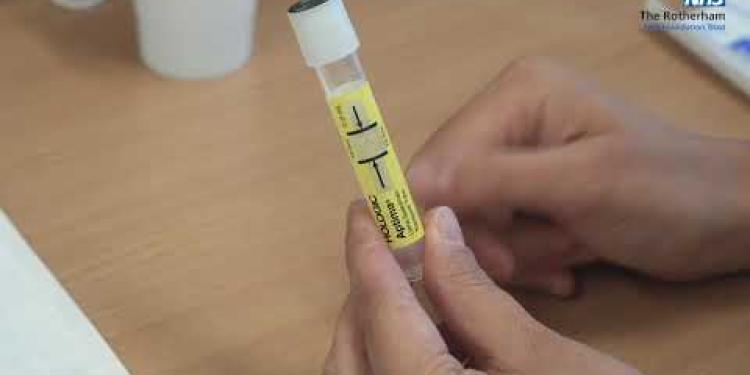
Urine test for Gonorrhoea and Chlamydia
Relevance: 100%
-
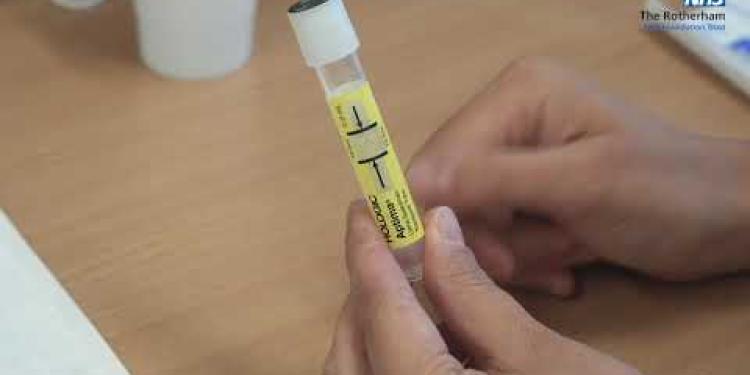
Urine test for Gonorrhoea and Chlamydia
Relevance: 91%
-
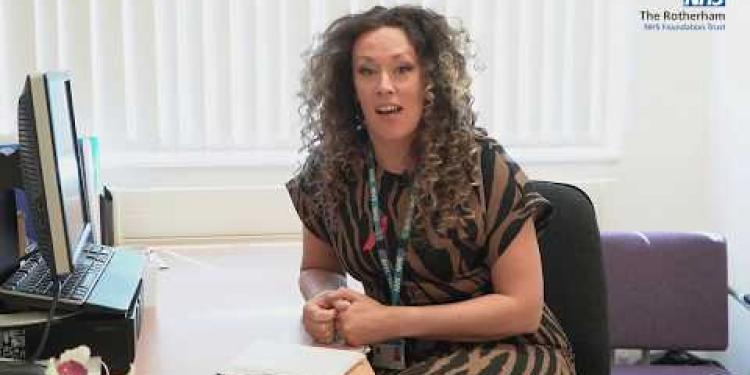
Vaginal Swab test for Gonorrhoea and Chlamydia
Relevance: 89%
-
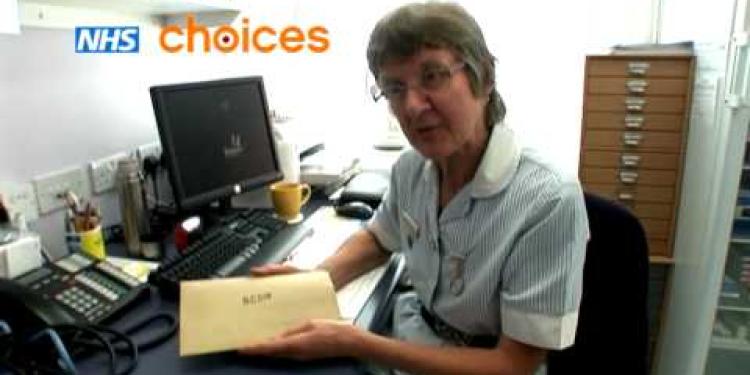
NHS - Chlamydia
Relevance: 85%
-

Chlamydia: The Silent Threat
Relevance: 84%
-

Pharyngeal swab for Gonorrhoea and Chlamydia
Relevance: 82%
-

The symptoms of gonorrhoea
Relevance: 80%
-
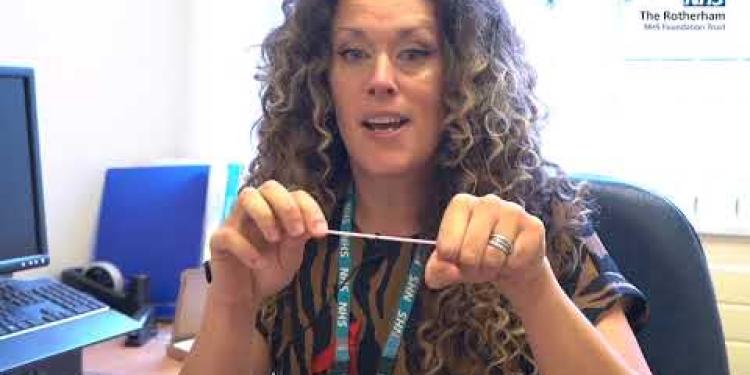
Rectal swab test for Gonorrhoea and Chlamydia
Relevance: 73%
-

Understanding Your Sexual Health - Gonorrhoea
Relevance: 69%
-
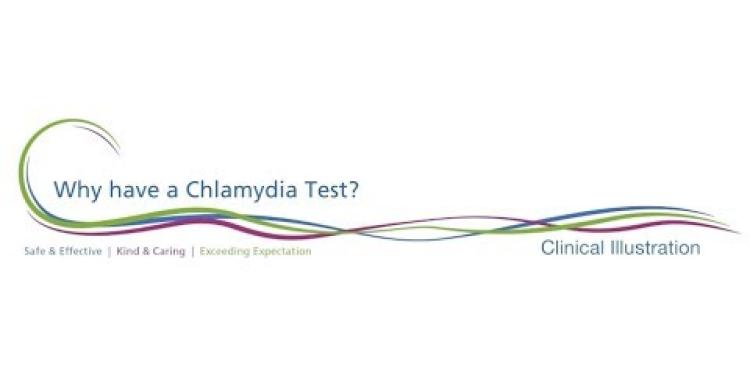
Getting tested for Chlamydia
Relevance: 63%
-

Sexually transmitted infections STIs
Relevance: 18%
-

Understanding Your Sexual Health - Pelvic Inflammatory Disease
Relevance: 11%
-

NHS STI (Sexually Transmitted Infections) Information Video
Relevance: 9%
-

BSL Pelvic inflammatory disease (PID)
Relevance: 9%
-
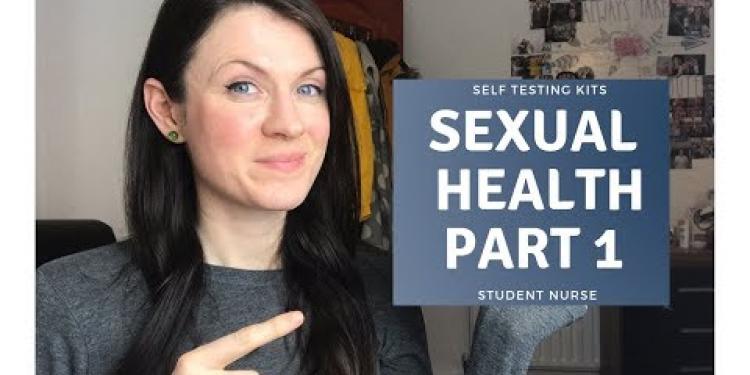
Let's Talk Sexual Health - Home Self Testing Kits
Relevance: 7%
-

Let's Talk Sexual Health - Home Self Testing Kits
Relevance: 5%
-

Reactive arthritis
Relevance: 4%
-

Female infertility explained
Relevance: 3%
Urine Test for Gonorrhoea and Chlamydia
Introduction to Gonorrhoea and Chlamydia
Gonorrhoea and Chlamydia are two of the most common sexually transmitted infections (STIs) in the United Kingdom. Both infections are caused by bacteria and are often asymptomatic, making regular testing crucial for sexually active individuals. Untreated, these infections can lead to severe health complications, including infertility and pelvic inflammatory disease.Importance of Urine Testing
Urine testing for Gonorrhoea and Chlamydia offers a non-invasive, convenient, and highly accurate method for detecting these infections. It is especially beneficial for individuals who may feel uncomfortable with more invasive procedures, such as swabs. Urine tests are commonly available at GP surgeries, sexual health clinics, and through various home testing kits in the UK.Procedure for Urine Testing
The urine test for Gonorrhoea and Chlamydia is straightforward. Patients are typically advised not to urinate for at least 1-2 hours before collecting the sample to ensure an adequate concentration of bacteria. The sample is usually collected using a sterile container, and only the first part of the urine stream (the initial 'catch') is required. This sample is then sent to a laboratory for analysis, where advanced techniques such as nucleic acid amplification tests (NAATs) are used to detect bacterial DNA.Interpreting Results
Results from a urine test are usually available within a few days. A negative test indicates that no bacterial DNA for Gonorrhoea or Chlamydia was found in the urine. A positive test means that the person has been infected and requires treatment. In the UK, both infections can generally be treated effectively with antibiotics. It is important to follow up with a healthcare provider for confirmation and to receive appropriate treatment and advice.Benefits of Routine Testing
Routine urine testing for Gonorrhoea and Chlamydia is vital for preventing the spread of these infections. Early detection ensures timely treatment, reducing the risk of complications and transmission to sexual partners. The NHS recommends regular screenings for sexually active individuals, particularly those with new or multiple partners. Free and confidential testing services are widely available across the UK.Conclusion
Urine tests for Gonorrhoea and Chlamydia are a key component in STI prevention and management. By providing an accessible and accurate testing method, individuals can easily monitor their sexual health and seek treatment promptly if necessary. Regular testing, combined with safe sex practices, can significantly reduce the prevalence of these infections and protect public health in the UK.Urine Test for Gonorrhoea and Chlamydia
What are Gonorrhoea and Chlamydia?
Gonorrhoea and Chlamydia are common infections you can get from having sex. They are caused by germs and sometimes people who have them don't feel sick. Testing is important if you are having sex because these infections can make you very sick if not treated.Why is Urine Testing Important?
Urine tests are an easy way to check if you have Gonorrhoea or Chlamydia. They are simple and don't hurt, which makes them good for people who do not like other tests that involve swabs. You can get these tests at the doctor's office, special health clinics, or with kits you use at home.How Does the Urine Test Work?
Doing the urine test is easy. Try not to pee for 1-2 hours before doing the test so the germs show up better. You collect the first bit of urine in a clean cup. This urine is sent to a lab to find out if there are germs. The lab has special ways to look for tiny parts of the germs.Understanding Test Results
You will get your test results in a few days. If the test says "negative," it means no germs were found. If it is "positive," it means you have the germs and need medicine. These infections can usually be cured with special medicine called antibiotics. Talk to a doctor to get the right treatment.Why Should We Test Regularly?
Testing often for Gonorrhoea and Chlamydia helps stop the spread of infections. Finding out early means you can get treated and don't spread it to other people. The NHS says people who have sex, especially with new partners, should get tested often. You can find places in the UK where testing is free and private.Summary
Urine tests for Gonorrhoea and Chlamydia help us manage infections better. They make it easy to check health and get treatment if needed. Getting tested often and practicing safe sex helps keep everyone healthy.Frequently Asked Questions
What is a urine test for Gonorrhoea and Chlamydia?
A urine test for Gonorrhoea and Chlamydia is a diagnostic test that detects the presence of the bacteria Neisseria gonorrhoeae and Chlamydia trachomatis in your urine sample.
How accurate are urine tests for Gonorrhoea and Chlamydia?
Urine tests for Gonorrhoea and Chlamydia are highly accurate, often with a sensitivity and specificity above 90%. However, accuracy can vary based on the quality of the sample and timing of the test.
Do I need to prepare for the urine test?
To prepare for the test, it is recommended that you do not urinate for at least 1-2 hours before providing the sample to ensure a concentrated urine sample.
How is the urine sample collected?
You will be asked to provide a midstream urine sample in a sterile container. This means you start urinating, then stop mid-flow to collect the urine in the container, and then finish urinating.
Where can I get a urine test for Gonorrhoea and Chlamydia?
You can get the test at your GP surgery, a sexual health clinic, or through home testing kits available online and at pharmacies.
How long does it take to get results?
Results are typically available within a few days to a week, depending on the testing facility.
Is the test painful?
The urine test is non-invasive and painless as it only requires you to provide a urine sample.
Can I test for both infections with a single urine sample?
Yes, a single urine sample can be used to test for both Gonorrhoea and Chlamydia simultaneously.
What are the common symptoms of Gonorrhoea and Chlamydia?
Symptoms of both infections may include unusual discharge from the genitals, pain during urination, and pain or swelling in the testicles. However, many people do not have noticeable symptoms.
Do I need to fast before the test?
No, fasting is not required before providing a urine sample for Gonorrhoea and Chlamydia testing.
Can I take the test if I have my period?
Yes, you can take the urine test during your period, although it is generally preferable to wait until your period has ended for the most accurate results.
What should I do if I test positive for Gonorrhoea or Chlamydia?
If you test positive, you should follow up with a healthcare provider for treatment, which typically includes a course of antibiotics. It is also important to inform sexual partners so they can be tested and treated if necessary.
Are home testing kits reliable?
Many home testing kits for Gonorrhoea and Chlamydia are reliable, but it’s essential to use a reputable brand and follow the instructions carefully. Confirm with a healthcare provider if you have any doubts.
Can I get tested anonymously?
Yes, many sexual health clinics and online services offer anonymous testing options to protect your privacy.
Is the test free on the NHS?
Yes, testing for sexually transmitted infections, including Gonorrhoea and Chlamydia, is available for free on the NHS in the UK.
What is a pee test for Gonorrhea and Chlamydia?
A pee test checks for germs that cause gonorrhea and chlamydia. You pee in a cup, and the doctor checks it.
Here are some tools and techniques that can help you:
- Ask a helper if you have questions.
- Watch a video about pee tests.
- Look at pictures that show how a pee test works.
A pee test can show if you have two kinds of germs called Gonorrhoea or Chlamydia. These germs can make you sick. Doctors check your pee to find these germs.
If reading is hard, use pictures or ask someone to explain. Talking to a doctor or nurse can help too.
How well do pee tests work for finding Gonorrhoea and Chlamydia?
Pee tests can show if you have illnesses like Gonorrhoea or Chlamydia. But they are not perfect. Sometimes, they might say you have it when you don't, or say you don't have it when you do.
If you are worried, it is best to talk to a doctor. They can help you understand the results and may suggest more tests.
You can also use tools like pictures or simple charts to help explain things. Talking with someone you trust can also make it easier to understand.
Urine tests can check if you have Gonorrhoea or Chlamydia. These tests are very good, and they work well most of the time. They can find the sickness in more than 90 out of 100 people. But, the test works best when the urine sample is good and the test is done at the right time.
If you have trouble reading, you can ask someone to help you read this. You can also use audiobooks or text-to-speech tools to listen to the text.
Do I need to get ready for the pee test?
Before the test, try not to go to the toilet for 1-2 hours. This helps keep your wee strong for the test.
How do you collect a pee sample?
You will need to give a pee sample. You will do this in a clean cup.
Here is how you do it:
- Start peeing.
- Stop peeing for a moment.
- Catch some pee in the cup.
- Finish peeing.
If you need help, you can ask someone to show you how.
Where can I get a pee test for Gonorrhoea and Chlamydia?
You can get a pee test for Gonorrhoea and Chlamydia at a health clinic, doctor’s office, or local hospital. It is free at some places.
Ask an adult you trust if you need help. They can go with you to the clinic.
You can also use the internet to find clinics near you. Search for “sexual health clinic near me.”
There are some apps and websites that can help you find a clinic too. Try looking for “clinic finder tool.”
You can get the test at your doctor's office, a special clinic for sexual health, or by using a home test kit that you can find online or at the drugstore.
How long until we know the answer?
You usually get the results in a few days or up to a week. This can change based on where the test is done.
Will the test hurt?
The urine test does not hurt. You just need to give a pee sample.
Can I check for two infections with one pee test?
Yes, you can test for both gonorrhea and chlamydia at the same time with just one urine sample.
What are the signs of Gonorrhea and Chlamydia?
Gonorrhea and Chlamydia are germs that can make you sick. Here are some things you might feel or see if you have them:
- Pain when you go to the toilet.
- Sore or itchy private parts.
- Weird drips or ooze from private parts.
- Pain in your belly.
If you think you might have these germs, talk to a doctor. They can help you feel better. You can also use pictures or videos to understand more about these germs. Remember to ask someone you trust if you have questions.
You might feel these signs if you have an infection:
- Something that is not normal coming from your private parts.
- Pain when you pee.
- Pain or swelling in your testicles.
But sometimes, you might not feel anything at all.
Try using a ruler to help keep your place when reading. You can also ask someone to read with you or use apps that read text out loud.
Do I have to stop eating before the test?
You do not need to stop eating or drinking before giving a pee sample to test for Gonorrhoea and Chlamydia.
Can I take the test if I have my period?
Yes, you can take the test when you have your period. Having your period does not stop you from taking the test.
If you are worried or feeling uncomfortable, tell someone. You can ask the test person or your teacher for help.
Bring things that help you feel better, like pads or tampons. Wear comfy clothes too.
Yes, you can do a pee test when you have your period. But it is usually better to wait until your period is over to get the best results.
What to Do If You Have Gonorrhoea or Chlamydia
If the doctor says you have gonorrhoea or chlamydia, don't worry. You can get better.
Here is what you can do:
- Take medicine. The doctor will give you pills to help you get well. Take all the pills, even if you feel better.
- Tell your boyfriend or girlfriend. They need to see a doctor too. This helps stop the spread of germs.
- Do not kiss or have close contact with others until you finish all your medicine.
- Ask for help. If you feel worried, talk to someone you trust like a parent, teacher, or friend.
- Use apps or reminders on your phone to remember your pills.
Remember, you can get help and feel better.
If you find out you have the infection, you should see a doctor. The doctor will give you medicine that you have to take. This medicine is called antibiotics. You also need to tell anyone you have had sex with. They might need to see a doctor too, to see if they have the infection and need medicine.
Do home testing kits work well?
Are you wondering if home testing kits give good results? Here are some tips to help you:
- Ask an adult to help you read the instructions.
- Follow each step carefully. Take your time.
- If you are not sure, ask for help from a doctor or nurse.
- You can use apps or videos online to see how to use the kit.
Many home test kits for Gonorrhoea and Chlamydia work well. It is important to use a good brand and read the instructions closely. Ask a doctor if you are unsure.
Can I get tested without anyone knowing who I am?
Yes, you can take a test without giving your name. When you do this, it's called being "anonymous." This means your identity is a secret. If you want help understanding more about this, you can ask someone you trust or look for information online. Reading tools, like reading apps, can also help you understand better. Don't be afraid to ask for help if you need it.
Yes, many places where you check your sexual health can keep your name secret. You can also get this test online without telling who you are. This helps keep your privacy safe.
Do I have to pay for the test on the NHS?
Yes, you can get free tests for infections you catch from sex, like Gonorrhoea and Chlamydia, with the NHS in the UK.
Useful Links
Useful links from: Rectal swab test for Gonorrhoea and Chlamydia
- NHS - Gonorrhoea NHS information page on Gonorrhoea, including symptoms, diagnosis, and treatment options.
- NHS - Chlamydia NHS guide to Chlamydia, covering symptoms, testing, treatment, and prevention.
- Terrence Higgins Trust - Gonorrhoea Charity page by Terrence Higgins Trust providing detailed information on Gonorrhoea testing and treatment.
- Terrence Higgins Trust - Chlamydia Information on Chlamydia from Terrence Higgins Trust, including how to get tested and treatment options.
Useful links from: Chlamydia: The Silent Threat
- NHS - Chlamydia The official NHS page provides comprehensive information on chlamydia, including symptoms, causes, testing, treatment, and prevention.
- Terrence Higgins Trust - Chlamydia The Terrence Higgins Trust's page on chlamydia offers detailed guidance on the symptoms, diagnosis, treatment, and how to prevent the spread of the infection.
- Brook - Chlamydia Brook provides information tailored for young people on chlamydia, its symptoms, how to get tested, and available treatments.
- FPA - Chlamydia The Family Planning Association's (FPA) page offers easy-to-understand information on chlamydia, its symptoms, testing, and treatment options.
Useful links from: NHS - Chlamydia
- NHS - Chlamydia The official NHS page providing comprehensive information on Chlamydia, including symptoms, causes, diagnosis, treatment, and prevention.
- NHS - Sexual Health and Chlamydia Testing This NHS resource explains the importance of sexual health screenings and provides details on testing for sexually transmitted infections, including Chlamydia.
- Brook - Chlamydia Brook is a UK-based charity that offers information and advice on sexual health. This page focuses on Chlamydia, detailing symptoms, prevention, and treatment options.
- FPA - Chlamydia FPA UK's Sexwise site provides detailed information on Chlamydia, including how it spreads, health risks, and where to get tested.
More Videos of Interestdiagnosis
Have you found an error, or do you have a link or some information you would like to share? Please let us know using the form below.
- Ergsy carfully checks the information in the videos we provide here.
- Videos shown by Youtube after a video has completed, have NOT been reviewed by ERGSY.
- To view, click the arrow in centre of video.
- Most of the videos you find here will have subtitles and/or closed captions available.
- You may need to turn these on, and choose your preferred language.
- Go to the video you'd like to watch.
- If closed captions (CC) are available, settings will be visible on the bottom right of the video player.
- To turn on Captions, click settings .
- To turn off Captions, click settings again.

